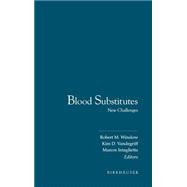- ISBN: 9780817638788 | 0817638784
- Cover: Hardcover
- Copyright: 3/1/1996
Although blood substitutes represent a goal that has been sought for more than a century, their development is now on the cutting edge of biotechnology: beyond biochemistry and molecular biology, these products are being integrated into the larger physiological picture of gas transport that is essential to every living organism. New products will find obvious clinical application, since they overcome many of the problems with blood transfusion, such as the need to crossmatch, storage limitations, and the risk of transmission of infectious disease. As work continues to bring this new class of products to market, discoveries have been made about very basic aspects of how red blood cells work with regard to the exchange of oxygen and carbon dioxide and interactions with molecules such as nitric oxide and carbon monoxide which may mediate contractility of smooth muscle. These new challenges are being met with impressive rapidity as products are readied for testing and introduction into clinical use. As more is understood about the general properties of artificial blood substitutes, attention is focusing on applications which will benefit the most from their availability. This volume is a collection of chapters by researchers currently working in the field of blood substitutes and closely related fields. Each of them focuses on current challenges from a different perspective, from the clinical question, "What is the target?", to detailed descriptions of the interactions with nitric oxide, endotoxin, and carbon dioxide. Included in the volume is a review of the peer-reviewed research published in 1995 and a general discussion of current products and potential clinical applications. Takentogether, these chapters provide an up-to-date picture of this rapidly evolving field.






